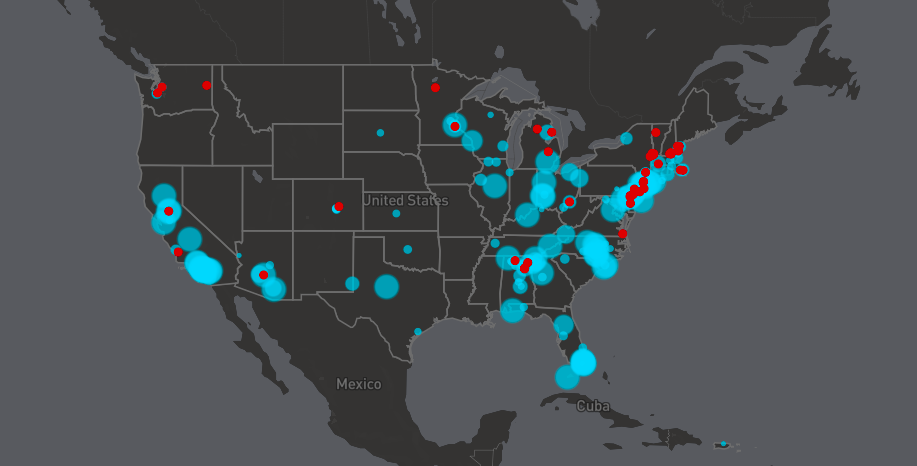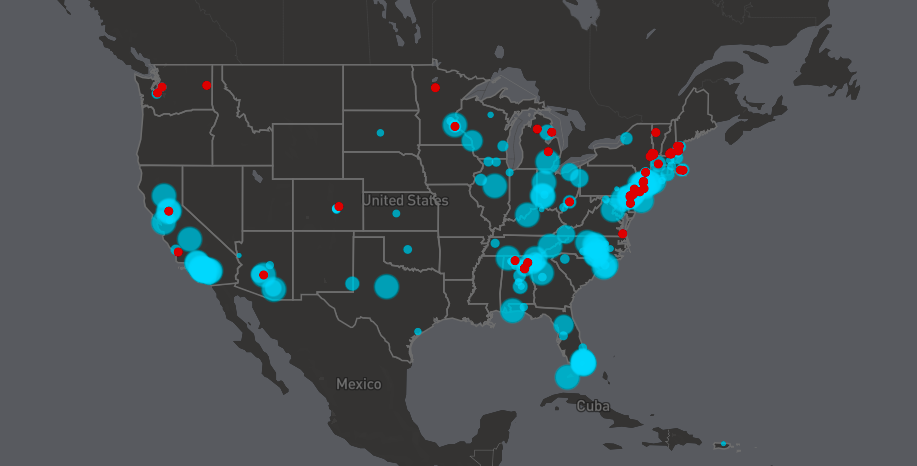Study: Toxic chemicals found in drinking water of 15M Americans

New research‚ from Northeastern University and the Environmental Working Group, shows toxic chemical pollution found in tap water systems that serve 15 million Americans in 27 states as well as in more than four-dozen industrial and military sites.
The study, which includes an interactive map, zeroed in on a class of man-made chemicals known as per- and polyfluoroalkyl substances, or PFASs. These chemicals, the researchers noted, have been found in a variety of manufactured products such as nonstick pans, fire retardants, and stain repellent products and have been linked to a range of health problems, but have gone largely unregulated.
The new research “reveals the inadequacy of U.S. chemical regulation and highlights the need for health-protective, precautionary chemical policy.
Phil Brown
University Distinguished Professor of Sociology and Health Sciences at Northeastern
Meanwhile, the extent of U.S. communities contaminated with PFASs, the researchers said, “continues to expand with no end in sight.” The map includes drinking water testing data from the Environmental Protection Agency between 2013 and 2016 of all U.S. public water systems serving 10,000 or more customers, as well as data collected by a research team in Northeastern’s Social Science Environmental Health Research Institute that is tracking publicly documented PFAS contamination sites in the U.S. and across the globe. The EPA testing found that PFASs were detected in 162 U.S. drinking water systems.
Phil Brown, the institute’s director and University Distinguished Professor of Sociology and Health Sciences at Northeastern, said the new research “reveals the inadequacy of U.S. chemical regulation and highlights the need for health-protective, precautionary chemical policy.”

A screenshot of the researchers’ map that features blue and red dots—the blue dots indicate public water systems where chemicals have been detected, and the red dots indicate contamination sites identified by Northeastern’s PFAS Contamination Site Tracker.
The researchers said the map is the most comprehensive resource available to track PFAS pollution in the U.S. and noted that they will continue to update the map as more contamination is discovered. The map features blue and red dots—the blue dots indicate public water systems where chemicals have been detected, and the red dots indicate contamination sites identified by Northeastern’s PFAS Contamination Site Tracker.
“We were struck that PFASs are a ubiquitous global contaminant and have a multi-decade history of contamination episodes around the world,” Brown said. “The contamination tracking project is an effort to document and share how exactly PFAS contamination is discovered.”
Indeed, in their report the researchers underscored their concern that not enough is known about the sources or ubiquity of this pollution. They pointed out that EPA chemical testing only covers water systems serving more than 10,000 people and is only mandated to test 30 chemicals per three-year testing period. What’s more, the researchers noted that there is no national-level testing of PFASs in drinking water, and no national drinking water standard has been set for these chemicals—only a nonbinding health advisory level from the EPA.
The research coincides with Northeastern’s hosting of a major conference this week that will bring together scientists, regulators, activists, and others to address the social, scientific, political, economic, and environmental health issues related to PFASs. The conference will examine both ubiquitous exposure in consumer products as well as contamination discoveries in water in the U.S. and across the globe.
Brown is a renowned scholar whose interdisciplinary research has for years focused on studying people’s exposure to a range of indoor contaminants. In the past year, he and his colleagues have authored research papers examining West Virginia and Ohio residents’ reactions to exposure to perfluorooctanoic acid—one chemical in the PFAS class—and analyzing FDA regulations on PFASs. His team’s PFAS Contamination Site Tracker details 50 industrial or military contamination sites in 18 states and Guam, as well as Australia, Canada, and the Netherlands.





